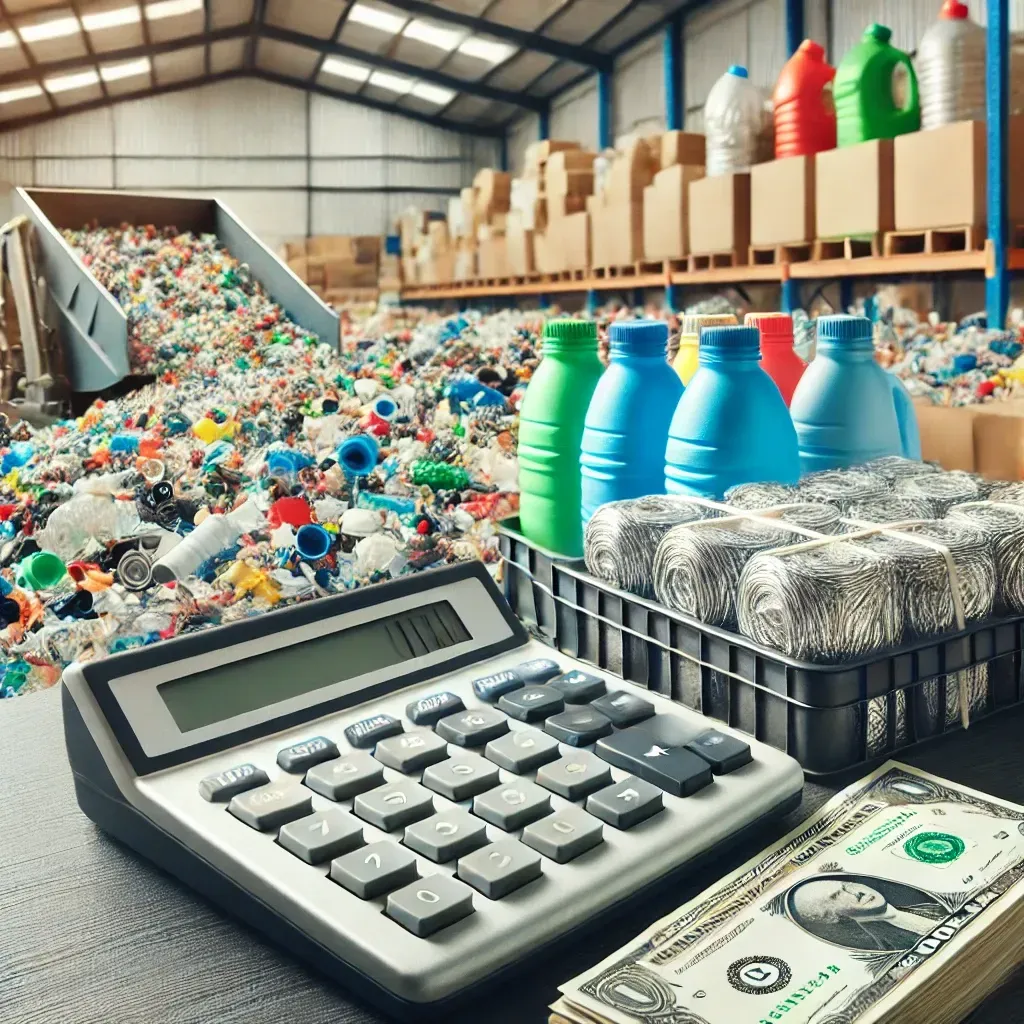Increase the Revenues of Your Waste Company With the Tips Shared in Our Blog Articles

Is Your Waste Management Business Leaving Money on the Table? How to Pinpoint and Profit from Every Waste Stream
Imagine this scenario: You’ve been working hard, running trucks, managing routes, paying drivers, and dealing with the everyday chaos that comes with owning a waste management company. At the end of the month, you check the balance sheet, and despite the constant hustle, the profits just aren’t where they should be. Sound familiar?
For many waste management companies, there’s a silent killer hidden in plain sight: the lack of clear insights into which waste streams are actually turning a profit and which are bleeding money. Sure, trucks are rolling, tons are collected, and the bills are getting paid. But unless you’re tracking, analyzing, and strategizing around each waste stream, you’re leaving money on the table—significant money.
If you’re going to run a thriving, profitable waste management business, you need to master the art of the numbers. You need to know, down to the dollar, which waste streams are worth the effort and which ones are holding you back. This isn’t about recycling to make the world a better place or keeping up with green trends; it’s about building a business that stands tall, one that understands its real sources of profit.
Profit-Driven Waste Stream Management: Your Roadmap to Financial Success
Waste collection isn’t just about clearing out dumpsters and hauling loads to the landfill; it’s about understanding that each type of material you collect can impact your bottom line differently. And while that seems obvious on paper, how often are you actually evaluating each stream? Are you measuring your costs per ton, revenue per ton, and the net profit of each waste category? Or, like most owners, are you just lumping it all together and hoping the numbers work out in the end?
The truth is, if you don’t have a system in place to evaluate each waste stream, you’re flying blind. Some waste types will be inherently more valuable, with clear demand in the market as secondary raw materials, while others will cost you more in processing and disposal than they’ll ever bring in.
[Download My EBook “Thriving With Waste”]
Step 1: Get a Handle on Your Costs
Let’s start with the basics: you need to know your costs, down to the penny. Every waste stream has its own logistics, handling, and processing expenses, and if you’re not tracking each one separately, you’re missing critical information. This includes not just the obvious expenses, like transport and labor, but also the less visible costs, like equipment wear and tear, disposal fees, or even regulatory compliance expenses for specific materials.
Here’s what to look for in your cost analysis:
Collection Costs – Fuel, driver wages, vehicle maintenance, and collection routes can vary greatly between streams.
Processing Costs – Do certain streams require sorting, shredding, or compacting? What’s the cost of that equipment and labor?
Disposal Costs – Landfill or incineration fees can eat into profits, especially for non-recyclable materials.
Hidden Costs – Licenses, permits, and compliance measures that may be unique to certain waste types.
When you look at these figures in isolation for each stream, you’ll start seeing which ones are draining resources faster than they’re bringing in cash. This is crucial—because if you’re in this business to make money, it’s time to stop doing free work. Every ton you collect should either be profitable in itself or contribute to your bottom line by feeding into a larger, profitable strategy.
Step 2: Maximize Revenue by Understanding Your Market for Secondary Raw Materials
Secondary raw materials aren’t just byproducts—they’re assets. In fact, they could be the difference between running an average business and a booming one. Think of every load of paper, every batch of metals, and every bale of plastics not as waste but as potential profit.
But here’s the kicker: the value of these materials isn’t set in stone. It’s influenced by factors like quality, sorting, and the current demand. To tap into the true profit potential of secondary raw materials, you need a market-driven approach. It’s not enough to simply collect and deliver; you need to know who’s buying, what they’re willing to pay, and how you can position your materials as valuable commodities.
Questions to ask yourself here:
What’s the Demand? – Which materials have the highest resale value right now? Keep an eye on fluctuating markets—metal prices, for instance, can rise and fall with global economic shifts.
Who Are the Buyers? – Are you selling directly to processors, manufacturers, or brokers? Each buyer has different expectations and price points.
How Are You Presenting Your Product? – Quality matters. Clean, sorted, and consistent materials command a higher price. Are you investing in the sorting and processing steps that will maximize your revenue?
This is where many waste companies fall short. They think of themselves solely as collectors, not as suppliers. But if you shift your mindset and start approaching your streams as products with a sales strategy, you’ll discover that there’s untapped potential sitting in those trucks.
[Download My EBook “Thriving With Waste”]
Step 3: Build a Strategy to Find Your Profit Sweet Spot
To thrive, you need a structured strategy. This isn’t about gut feelings or the latest trend in waste—it’s about crafting a clear, actionable plan that gives you control over your profit margins. When you fully understand each waste stream’s role in your overall profitability, you’ll be empowered to make strategic decisions, such as:
Adjusting Collection Schedules – Waste streams with high value can justify more frequent collections. On the flip side, low-value or high-cost streams might need to be reduced or phased out entirely.
Strategically Pricing Services – If you know a particular material isn’t profitable, you can adjust your pricing or introduce fees to cover the shortfall.
Pursuing High-Value Contracts – Prioritize commercial or industrial clients who produce the materials that align with your profitable streams.
And here’s the golden rule: Stop chasing revenue and start chasing profit. Some waste streams may bring in substantial revenue but leave you with little to show for it once all expenses are factored in. Profit-driven waste management is about identifying and amplifying the streams that contribute the most to your net income while minimizing or re-evaluating those that don’t.
A Case for Better Data Management
You’re probably thinking, “This all sounds good, but how am I supposed to track all these numbers?” It’s a fair question. Many companies are still using outdated methods or general accounting software that doesn’t capture the nuances of waste stream profitability.
To make this work, you need a robust data management system—one that gives you real-time insights into the costs, revenues, and profitability of each waste type. This might mean investing in specialized software, implementing new tracking systems, or working with a consultant who can set up the framework for you. Yes, there’s an upfront cost, but if you want to turn your company into a lean, profitable machine, this is non-negotiable.
Building the Future: Waste Streams as a Strategic Asset
If you’ve been in the industry for a while, you know that margins are tight, competition is fierce, and costs are always on the rise. But by shifting your focus to understanding and controlling your numbers on a granular level, you’re setting yourself apart from the pack. You’re not just another waste management company—you’re a profit-driven enterprise with a clear, calculated path to growth.
And here’s the thing: once you’ve nailed down a system for identifying, evaluating, and capitalizing on profitable waste streams, you’ve created a model that can scale. You’ll be able to replicate this success as you expand, bringing on new contracts and expanding your service area. More importantly, you’ll be armed with the insights you need to make smart, strategic moves, ensuring that every ton you collect and every dollar you spend is building the business you deserve.
Final Thoughts: It’s Time to Take Control
Waste management is a challenging field, no doubt. But the companies that thrive are the ones that treat each decision, each truck, and each load with the precision of a profit-driven business. It’s time to stop viewing your waste streams as simple “collections” and start seeing them for what they are: potential profit centers that need to be managed, optimized, and sold strategically.
So, here’s your next step: take a deep dive into your current streams. Assess where your money is really going and where it’s truly coming in. And if you need help creating that roadmap to profitability, remember, there are people like me out there who specialize in transforming waste management companies into profitable powerhouses.
Because at the end of the day, waste management isn’t just a service—it’s a business. And every business deserves a strategy designed to win.
To Your Success
Sam Barrili
The Waste Management Alchemist


© 2024 Marketing4waste - All Rights Reserved,
Marketing4Waste is a brand of MiM MarketingInterimManagers LLC
+1 801 804 5730

